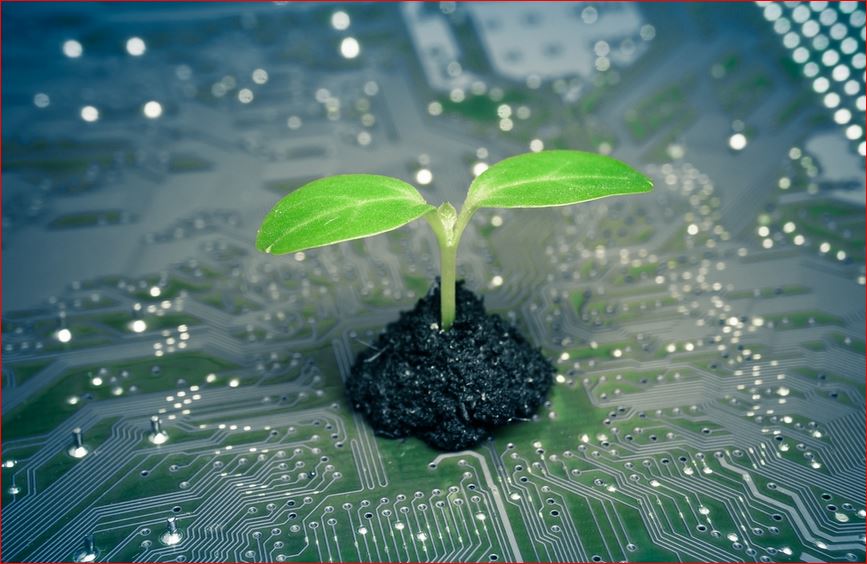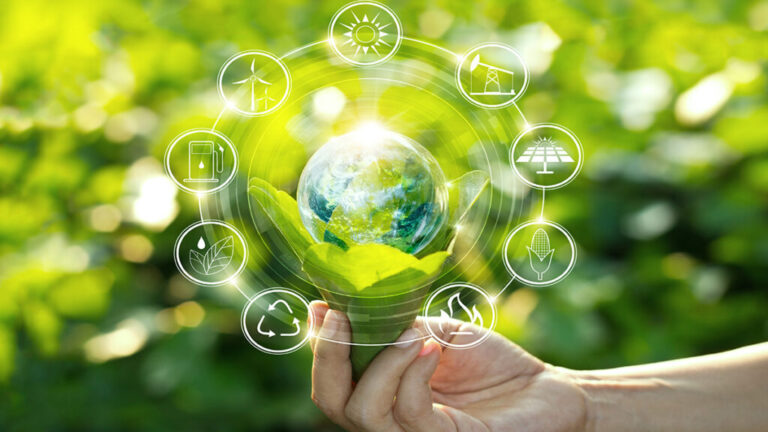The urgency of climate change and environmental degradation has propelled green technology from a niche concern to a global imperative. This isn’t just about eco-friendly products; it’s a profound, systemic shift toward developing and deploying innovations that minimize human impact on the planet, conserve natural resources, and build a truly sustainable future. Green tech innovations are fundamentally reshaping industries, economies, and societies, offering tangible solutions to some of humanity’s most pressing environmental challenges. This comprehensive exploration delves into the cutting-edge advancements driving this revolution, its transformative impact across diverse sectors, the significant challenges that lie ahead, and the essential role it plays in securing a livable future for generations to come. Understanding this critical field is vital for anyone interested in the intersection of technology, sustainability, and economic growth in the 21st century.
The Genesis of Green Tech

Green technology, also known as environmental technology or cleantech, encompasses technologies whose use is intended to mitigate or reverse the effects of human activity on the environment. Its emergence is a direct response to growing awareness of ecological crises.
A. Early Environmental Awareness
The roots of the modern environmental movement can be traced back to the mid-20th century, with influential works like Rachel Carson’s “Silent Spring” (1962) highlighting the detrimental effects of pesticides.
- Pollution Control: Early efforts focused on managing and reducing industrial pollution through filters, scrubbers, and waste treatment facilities.
- Conservation: Emphasizing the protection of natural habitats and biodiversity.
- Regulatory Frameworks: Establishment of environmental protection agencies and legislation (e.g., Clean Air Act, Clean Water Act) in many countries.
B. The Rise of Renewable Energy
The oil crises of the 1970s spurred interest in alternative energy sources, laying the groundwork for modern renewable energy.
- Early Solar and Wind Projects: Initial, smaller-scale deployment of solar panels and wind turbines, often with high costs.
- Energy Efficiency: Focus on reducing energy consumption through improved insulation, efficient appliances, and industrial processes.
- Growing Climate Change Concerns: Scientific consensus on anthropogenic climate change intensified the search for sustainable energy solutions in the late 20th and early 21st centuries.
C. The Current Paradigm
Today’s green tech is characterized by a holistic approach, integrating multiple disciplines and aiming for systemic change.
- Integration of Digital Technologies: AI, IoT, and big data analytics enhance the efficiency and intelligence of green solutions.
- Economic Viability: Many green technologies are now cost-competitive with, or even cheaper than, traditional alternatives.
- Circular Economy Principles: Moving beyond “take-make-dispose” to design systems that maximize resource utility and minimize waste.
- Cross-Sectoral Application: Green tech is no longer confined to energy; it’s transforming transportation, agriculture, manufacturing, and urban development.
- Global Collaboration: Acknowledging that environmental challenges are global, requiring international cooperation in R&D and deployment.
This evolution marks a transition from reactive pollution control to proactive, innovative solutions that aim to fundamentally redesign our industrial and societal systems for long-term ecological balance.
The Pillars of Green Tech
Green tech is a broad field, but several key areas are driving the most significant advancements.
A. Renewable Energy Systems
The transition from fossil fuels to clean energy sources is the cornerstone of green technology.
- Solar Power:
- Photovoltaics (PV): Continued improvements in efficiency, durability, and cost reduction of solar panels. Innovations include flexible solar cells, transparent solar cells for windows, and perovskite solar cells with high theoretical efficiencies.
- Concentrated Solar Power (CSP): Systems that use mirrors or lenses to concentrate a large area of sunlight onto a small area, often to heat fluid and generate electricity. Advanced designs offer thermal energy storage for continuous power.
- Wind Power:
- Onshore and Offshore Wind Turbines: Increasing turbine size and efficiency to capture more wind energy. Offshore wind farms benefit from stronger, more consistent winds.
- Floating Offshore Wind: Technologies allowing turbines to be installed in deeper waters, expanding viable offshore wind sites.
- Vertical-Axis Wind Turbines (VAWTs): Explore alternative designs potentially suitable for urban environments or specific wind conditions.
- Energy Storage: Crucial for integrating intermittent renewables into the grid.
- Lithium-Ion Batteries: Dominant technology for electric vehicles and grid-scale storage, constantly improving in energy density, lifespan, and safety.
- Flow Batteries: Promising for large-scale, long-duration grid storage due to their scalability and long cycle life.
- Solid-State Batteries: Next-generation battery technology promising higher energy density, faster charging, and improved safety.
- Hydrogen Production and Storage:
- Green Hydrogen: Produced by electrolysis of water using renewable electricity, seen as a key decarbonization pathway for heavy industry, long-haul transport, and seasonal energy storage.
- Hydrogen Fuel Cells: Convert hydrogen into electricity with water as the only byproduct, powering vehicles or generating electricity.
- Geothermal Energy: Harnessing heat from the Earth’s interior for electricity generation and direct heating/cooling. Advanced geothermal systems are exploring enhanced geothermal systems (EGS) to access more widespread resources.
- Hydropower: While mature, innovations include small-scale run-of-river systems and advanced pumped-hydro storage.
- Tidal and Wave Energy: Emerging technologies that capture energy from ocean movements, still largely in R&D phases but with vast potential.
B. Sustainable Transportation
The transport sector is a major emitter; green tech is transforming it.
- Electric Vehicles (EVs): Rapid advancements in battery technology, charging infrastructure, and vehicle performance.
- Battery Electric Vehicles (BEVs): Cars, buses, trucks, and even aircraft powered solely by electricity.
- Hybrid and Plug-in Hybrid Electric Vehicles (PHEVs): Bridge technologies combining electric and internal combustion engines.
- Hydrogen Fuel Cell Vehicles (FCVs): Offer long range and fast refueling, especially for heavy-duty transport.
- Sustainable Aviation Fuels (SAFs): Biofuels and synthetic fuels derived from sustainable sources, offering a pathway to decarbonize aviation.
- Electric Public Transport: Widespread adoption of electric buses, trains, and trams.
- Micromobility: Electric bikes, scooters, and other small personal transport devices reduce reliance on cars for short distances.
- Smart Mobility Systems: AI-powered traffic management, ride-sharing optimization, and integrated public transport systems to reduce congestion and emissions.
C. Waste Management and Circular Economy
Moving beyond landfills towards a circular economy where resources are reused and recycled.
- Advanced Recycling Technologies: Innovations in plastic recycling (e.g., chemical recycling), electronic waste (e-waste) processing, and textile recycling.
- Waste-to-Energy: Technologies that convert non-recyclable waste into electricity or heat.
- Composting and Anaerobic Digestion: Converting organic waste into valuable products like compost or biogas.
- Sensor-Based Sorting: AI and sensor technology to improve the efficiency and accuracy of waste sorting.
- Product Design for Circularity: Designing products from the outset to be durable, repairable, and easily recyclable.
- Blockchain for Supply Chain Traceability: Enhancing transparency in material flows to promote sustainable sourcing and recycling.
D. Sustainable Agriculture and Food Systems
Addressing the environmental impact of food production.
- Vertical Farming and Indoor Agriculture: Growing crops in controlled indoor environments, reducing land use, water consumption, and pesticide needs.
- Precision Agriculture: Using IoT sensors, drones, and AI to monitor crop health, soil conditions, and livestock, optimizing water and fertilizer use.
- Alternative Proteins: Development of plant-based meats, cultivated meat (lab-grown), and insect-based proteins to reduce the environmental footprint of traditional livestock.
- Bio-pesticides and Bio-fertilizers: Sustainable alternatives to synthetic chemicals, reducing pollution.
- Water-Efficient Irrigation: Technologies like drip irrigation and smart watering systems minimize water waste.
- Carbon Sequestration in Soil: Practices that enhance the ability of agricultural soils to capture and store atmospheric carbon.
E. Water Management and Conservation
Ensuring access to clean water while minimizing waste.
- Advanced Filtration and Purification: New membrane technologies for desalination and wastewater treatment, making previously unusable water sources viable.
- Smart Water Grids: IoT sensors and AI optimize water distribution, detect leaks, and manage demand.
- Rainwater Harvesting Systems: Collecting and storing rainwater for various uses.
- Fog Harvesting: Technologies to collect atmospheric moisture in arid regions.
- Desalination using Renewable Energy: Powering desalination plants with solar or wind energy to reduce their carbon footprint.
The Transformative Impact of Green Tech Across Society

The widespread adoption of green technologies is not just an environmental necessity; it’s a powerful driver of economic growth, job creation, and improved quality of life.
A. Economic Growth and Job Creation
The green economy is a significant source of new employment opportunities.
- New Industries: The development and deployment of renewable energy, EV manufacturing, and sustainable agriculture are creating entirely new sectors.
- Skilled Labor Demand: A growing need for engineers, technicians, researchers, and installers in green tech fields.
- Reduced Energy Costs: For consumers and businesses, switching to renewables or implementing efficiency measures can lead to significant long-term cost savings.
- Investment Opportunities: Green bonds, sustainable finance, and venture capital pour into green tech startups.
B. Improved Public Health and Quality of Life
Lowering pollution has direct, tangible benefits for human health.
- Cleaner Air and Water: Reduced emissions from fossil fuels and improved waste management lead to fewer respiratory illnesses and cleaner drinking water.
- Reduced Noise Pollution: Electric vehicles and quieter industrial processes contribute to more peaceful environments.
- Sustainable Urban Environments: Green buildings, urban green spaces, and efficient public transport enhance livability in cities.
- Food Security: Sustainable agricultural practices contribute to resilient food systems less susceptible to climate shocks.
C. Energy Independence and Security
Diversifying energy sources reduces reliance on volatile fossil fuel markets.
- Reduced Geopolitical Risks: Less dependence on imported fossil fuels enhances national energy security.
- Distributed Energy Generation: Rooftop solar and local wind farms create more resilient and decentralized energy systems.
- Price Stability: Renewable energy sources, once built, have predictable operating costs, less exposed to global fuel price fluctuations.
D. Enhanced Resource Efficiency and Resilience
Green tech helps societies manage resources more effectively and adapt to climate change impacts.
- Water Scarcity Mitigation: Efficient water management and alternative water sources address growing water stress.
- Circular Economy Benefits: Reduces raw material extraction, minimizes waste, and creates closed-loop systems, enhancing resource security.
- Climate Adaptation: Technologies for smart infrastructure, early warning systems, and drought-resistant crops aid in adapting to climate change impacts.
E. Corporate Social Responsibility and Brand Image
Companies adopting green tech gain reputational advantages.
- Consumer Preference: A growing number of consumers prefer environmentally responsible brands.
- Investor Appeal: Sustainable investing (ESG investing) is gaining momentum, attracting capital to green businesses.
- Employee Engagement: Employees are often more motivated to work for companies committed to sustainability.
Challenges in Green Tech Adoption
Despite its immense promise, green technology faces significant hurdles on its path to widespread global adoption.
A. Policy and Regulatory Frameworks
Inconsistent or insufficient government policies can hinder progress.
- Lack of Clear Incentives: Insufficient subsidies, tax breaks, or carbon pricing mechanisms to encourage green tech adoption.
- Bureaucracy and Permitting: Slow or complex regulatory processes can delay the deployment of large-scale renewable energy projects.
- Resistance from Incumbent Industries: Powerful fossil fuel lobbies can resist policies favoring renewables.
- International Cooperation: Climate change is a global problem, but international agreements on emissions reductions and technology transfer can be slow and challenging.
B. Infrastructure Development
Transitioning to a green economy requires massive infrastructure investment.
- Grid Modernization: Existing electricity grids often need significant upgrades to integrate large amounts of intermittent renewable energy.
- EV Charging Infrastructure: A widespread, reliable network of charging stations is essential for mass EV adoption.
- Hydrogen Production and Distribution: Building the necessary infrastructure for green hydrogen production, storage, and transportation is a monumental task.
- Recycling Infrastructure: Scaling up advanced recycling facilities to handle vast amounts of waste.
C. Cost and Investment
While costs are falling, initial capital investment can still be a barrier.
- Upfront Costs: Building renewable energy plants or installing green technologies can have high initial capital expenditures, even if operational costs are lower.
- Financing Mechanisms: Developing innovative financial instruments to de-risk green tech investments and make them more accessible.
- Developing Economies: Ensuring developing nations have access to affordable green technologies and financing to avoid “leapfrogging” dirty development.
D. Technological Maturity and Integration
Some green technologies are still in early stages or face integration challenges.
- Energy Storage Scalability: While batteries are improving, truly long-duration, grid-scale energy storage is still an area of active research.
- Intermittency of Renewables: Managing the variability of solar and wind power requires sophisticated grid management and storage solutions.
- Material Scarcity: Reliance on certain rare earth minerals or critical materials for batteries and other components can create supply chain vulnerabilities.
- Waste Streams from Green Tech: Managing waste products from solar panels, wind turbine blades, and EV batteries at end-of-life.
E. Public Acceptance and Behavioral Change
Transitioning to a green economy often requires shifts in public behavior and perception.
- NIMBYism (Not In My Backyard): Local opposition to renewable energy projects (e.g., wind farms, solar farms) due to visual impact or noise concerns.
- Consumer Habits: Encouraging sustainable consumption patterns, reducing waste, and embracing new technologies like EVs.
- Information Disparity: Combating misinformation about climate change and green technologies.
The Future of Green Tech
Despite the challenges, the trajectory for green technology is one of relentless innovation and increasing integration.
A. Digitalization and Smart Systems
AI, IoT, and big data will continue to enhance green tech.
- Predictive Maintenance for Renewables: AI monitors wind turbines and solar farms to predict failures and optimize performance.
- Smart Homes and Buildings: AI-powered systems optimize energy consumption, lighting, and HVAC based on occupancy and external conditions.
- Blockchain for Carbon Markets and Supply Chains: Providing transparency and integrity in carbon credit trading and sustainable product sourcing.
B. Novel Materials and Biotechnology
Breakthroughs in materials science and biology will unlock new solutions.
- Next-Gen Catalysts: More efficient catalysts for industrial processes, reducing energy consumption and waste.
- Bio-Engineered Solutions: Microbes designed to break down plastics, capture carbon, or produce biofuels.
- Advanced Composites: Lighter and stronger materials for wind turbine blades, vehicles, and construction.
C. Decentralization and Localized Solutions
A shift towards more distributed and resilient green infrastructure.
- Microgrids: Localized energy grids that can operate independently or connected to the main grid, enhancing resilience.
- Community Renewable Projects: Enabling local communities to own and manage their renewable energy assets.
- Prosumers: Consumers who both consume and produce energy (e.g., rooftop solar owners).
D. Blended Finance and Green Investment
Mobilizing capital at scale is crucial.
- Impact Investing: Growing interest from investors in projects that deliver both financial returns and positive environmental impact.
- Green Bonds and Sustainability-Linked Loans: Financial instruments specifically designed to fund green projects.
- Public-Private Partnerships: Collaboration between governments and private sector to fund large-scale green infrastructure.
E. Global Policy Alignment and Collaboration
International efforts will be vital to accelerate the green transition.
- Carbon Pricing Mechanisms: Implementation of carbon taxes or cap-and-trade systems to incentivize emissions reductions.
- International Standards: Development of global standards for green products, services, and reporting.
- Technology Transfer: Facilitating the transfer of green technologies from developed to developing nations.
Conclusion
Green Tech Innovations are not merely a sector; they represent humanity’s most promising pathway to a sustainable future. From revolutionizing how we generate and consume energy to transforming agriculture, managing waste, and safeguarding our precious water resources, these technologies offer concrete solutions to the escalating environmental crisis. While formidable challenges remain—ranging from policy hurdles and infrastructure demands to the sheer scale of global transformation required—the relentless pace of innovation, coupled with increasing global awareness and investment, suggests an unstoppable momentum. By embracing these advancements, investing in research, fostering supportive policies, and encouraging widespread adoption, we can collectively build a world that is not only technologically advanced but also ecologically balanced and prosperous for all. The future is green, and the time for its comprehensive dawn is now.








